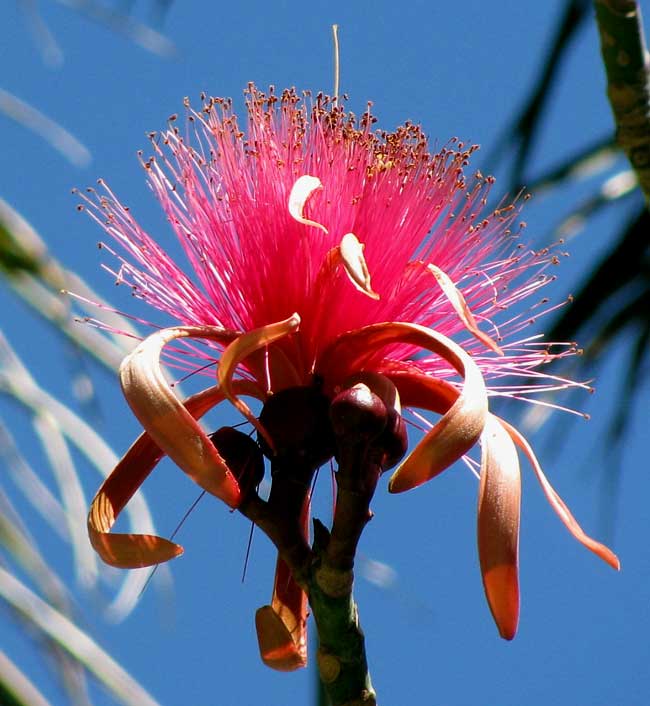
An Excerpt from Jim Conrad's
NATURALIST NEWSLETTER
February
14, 2010
Issued
from Hacienda Chichen Resort adjoining Chichén Itzá Ruin in YUCATÁN, MÉXICO

When I saw the very first Amapola blossom -- the one shown above glowing in morning sunlight so pink and perfect against the blue sky -- I just had to stand awhile, transfixed. What is it about pretty things that please us? We speak of being transported by exquisite beauty, but transported how, and to where?
While gazing at the pink Amapola blossom it occurred to me that my enchantment rooted in at least two different starting places.
The first was my senses. The blossom was big and pink, and experiments show that wavelengths in the red part of the color spectrum excite our visual neurons more than those of the "cooler" zones, such as green and blue. The blossom's reddishness against the sky's blueness formed a stark contrast, and the mind delights in contrasts, whether it's an icy drink on a hot day, a lone cricket chiming in a silent night, or a hot-pink blossom against the cool-blue sky. And of course the mind reacts more to "big" than "little."
In these ways the Amapola blossom was appealing for the simplest, most elemental reasons possible. A child can delight in seeing big, pink Amapola flowers against the bright, blue sky.
The second level of satisfaction with the Amapola flower was available only to those more experienced and sophisticated than a child. To experience second- level pleasure you must see the thing before you in a valued context. Knowing that a work by Beethoven is his First Symphony, and that the urgent power being expressed in that symphony -- and being expressed so well for the first time in history -- delights us in itself. Similarly, sculpted objects can please us because they exhibit "classic symmetry" -- structure harmonious with the laws of symmetry.
Seeing the Amapola's flower so elegantly expressing the genus Pseudobombax's position on the evolutionary/ phylogenetic Tree of Life was deeply satisfying in the same way. Here's how that worked: The Magnolia Family with it large, showy flowers bearing many stamens is regarded as a primitive family, and the fossil record supports that theory. Amapola's flowers similarly are large and showy, with many stamens. I have grounds, then, for interpreting the Amapola's large, showy blossoms as manifesting "primitive vitality," like a Pacific Islander painted by Gauguin. The resultant second-level pleasure contributes to a sense of "beauty" that is far richer and pleasing than a beauty based solely on first-level sensual input.
There must be a third level of beauty beyond these two. I've briefly glimpsed it enough to guess what it might be like. I think the third level of delight possible for beautiful things to give us becomes possible once we have attained spiritual concepts that allow us to see that we are as much a part of Nature as everything else. Nature is music of the Creator, and flowers and people are harmonizing tones in that music. The same impulse blossoming into the Amapola flower... blossoms me. In beholding the beautiful flower, I find beauty in myself, and visa versa.
The fourth level, I can guess, would be the beauty possible by overcoming the illusion that flowers and people are separate beings in the first place.